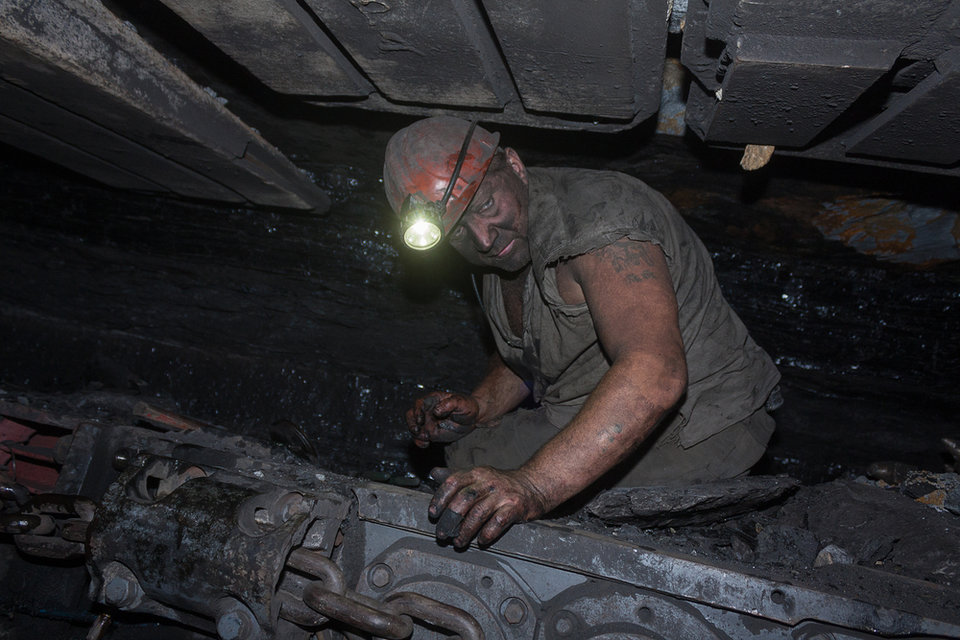Mining Mozambique: from rubies to graphite investors
Mozambique’s plethora of untapped natural resources has led to a flurry of foreign investments in its burgeoning mining sector. So, with investors newly focused on the southeast African nation, what does the future hold? Heidi Vella reports
Scroll down to read the article
Mozambique is one of the world's biggest producers of tantalite and beryllium and was Africa’s second-ranked producer of aluminium after South Africa in 2014. Yet, most of the country’s mineral potential is largely untapped.
In recent years, however, Mozambique has seen an uptake in new investments and contracts from foreign firms particularly keen to exploit the country’s relatively easily accessible reserves of ruby, emerald, graphite and gold.
The new interest is promising for Mozambique, which is struggling financially after losing access to international lenders in 2016 after an investigation by The Wall Street Journal revealed $1.2bn in previously undisclosed loans.
Furthermore, according to an International Monetary Fund report in March, economic growth in the country is expected to decline for the third consecutive year in 2018. But could new mining deals provide a monetary boost for the mineral rich nation, as well as new opportunities for the global mining sector?
Investments and projects
Demand for non-diamond stones is on the increase. Prices have increased 100% in the last decade, according to a report from the Natural Resource Governance Institute, which states that sales of coloured gemstone jewellery (excluding jade) are estimated to account for between 5% and 7% of global retail sales, or between $10bn and $12bn each year.
This increase in the value of coloured gems has driven new investments in Mozambique’s gem-rich regions.
New gemstone mining company Fura Gems, which is directed by former COO of Gemfields Dev Shetty, recently announced it is expanding its investments in Mozambique, with its purchase of nine ruby assets from Mustang Resources and Regius Resources Group for A$15m.
Shetty has said he expects to rapidly ramp up production from Fura’s ruby projects from one million carats per year to between three and four million, rising in the long-term to six million carats.
Fura is expected to have the largest ruby concession in the country. Gemfields, Shetty’s former employer, also has a sizable project in Mozambique, around half the size of New York City, according to Bloomberg.
The company owns a 75% stake in Montepuez Ruby Mining Limitada, which started operations in February 2012. The company has said the concession contains an estimated 467,000 carats worth of rubies in both primary and secondary mineralisation.
Western Australia-based Battery Minerals, meanwhile, is developing the Montepuez graphite 50,000tpa flake project that is expected to have a life span of 20 years.
The company intends to grow production to 100,000tpa through the execution of Montepuez Stage 2 (M2). According to reports, Stage 1 of the project is expected to discharge between $30m to $35m worth of vanadium a year, in the form of tailings material.
In March, the company noted that the project is ‘well on track’ to start producing graphite by this November, after rapid progress had been made on key construction items and supply contracts.
The firm’s managing director David Flanagan has said recently that the company is also hoping to exploit the near $10bn worth of vanadium contained in the project.
Australia-based Syrah Resources is also mining graphite and is invested in the Balama Graphite Project situated in the Cabo Delgado province of northern Mozambique. The project was officially opened in April and is expected to produce an average of 350,000tpa of graphite concentrate at full capacity over a 50-year mine life.
This increase in the value of coloured gems has driven new investments in Mozambique’s gem-rich regions

Miners line up at the Montepuez graphite project. Credit: Battery Minerals
Syrah Resources claims that 90% of its employees at the Balama Graphite Project are Mozambican nationals
Clashes and risk
For Mozambique, these new large-scale projects represent a shift to a more organised mining sector in the country.
Currently, small producers make up around 90% of the coloured gemstone industry. According to a report by Bloomberg, several big gem discoveries in the northern part of the country resulted in an estimated 10,000 people from all over the world coming to the region to find and trade rubies.
However, the police have been making arrests and are keen to crack down on artisanal mining and formalise the sector completely.
Nevertheless, locals living in poverty are keen to exploit the easily accessed shallow gem deposits. The increase in big projects has seen a rise in tensions between the new mega mining projects and artisanal miners.
In April, law firm Leigh Day said it had issued proceedings at the High Court in London against Gemfields Limited, after 100 Mozambicans alleged serious human rights abuses at the hands of security forces on or around the Montepuez Ruby Mine. Gemfields has also been linked to extremist activity in northern Mozambique – links that the company has said are ‘misleading’.
Other challenges and risks can arise for foreign miners in Mozambique due to political instability and corruption.
Transparency International (TI) warns of corruption as a major “underlying cause of the country’s malaise”, which it estimates to have cost Mozambique almost $5bn between 2002 and 2014.
According to TI, “Mozambique presents a textbook case of a country whose legal and institutional framework has been brought into line with international good practice, but whose good governance window dressing is unable to compensate for blatant abuses of power.”
Credit: Rob Lavinsky via Wikimedia Commons

The increase in big projects has seen a rise in tensions between the new mega mining projects and artisanal miners
Future potential
Despite the challenges, which are not uncommon in the wider region, miners seem keen to exploit the opportunities that Mozambique presents.
Shaun Verner, CEO of Syrah Resources, said he believes Mozambique has significant exploration and resource potential, with many international companies considering potential projects in its mining industry. He adds that ongoing improvements to local infrastructure, such as the national grid and road systems, can also benefit the country and miners alike.
China, for one, is investing heavily in infrastructure projects in the country.
It is hoped that continued investments in the sector can also benefit local communities and Mozambique’s ailing economy.
Syrah Resources claims that 90% of its employees at the Balama Graphite Project are Mozambican nationals. And Gemfields says that, as of 30 June 2017, it has paid $70m to the government in the form of corporation taxes and production royalties.
With future demand for Mozambique’s key minerals – rubies, graphite and vanadium – already high, production is expected to remain strong.
Furthermore, export.gov, which is run by the US International Trade Administration, says that given the expectation that mining costs in South Africa will rise considerably over the coming years, Mozambique could gain a regional competitive advantage.
Barring any major political upheaval, and with good local stakeholder engagement, the potential for Mozambique’s mining sector will continue to look good.
Syrah Resources claims that 90% of its employees at the Balama Graphite Project are Mozambican nationals